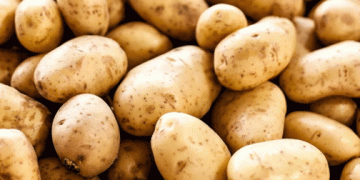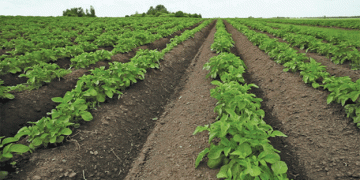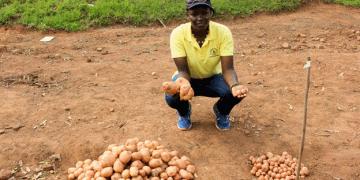According to the latest data from Statistics Korea, the Gangwon region experienced a notable drop in spring potato production in 2024. The report reveals a decrease of 11.4% in production volume, falling to 47,790 tons compared to the previous year. Similarly, the total area under cultivation also saw a reduction, shrinking by 4.5% to 1,728 hectares.
This decline in Gangwon’s spring potato production, which represents 12% of the nation’s overall output, makes it the third-largest producer in South Korea, trailing behind Gyeongbuk and Chungnam. However, the consistent downward trend raises concerns for the local agricultural economy and for the region’s farmers, many of whom depend on potatoes as a key crop.
Factors Contributing to the Decline
Several factors have likely contributed to the reduction in both yield and cultivated area. One prominent issue is the changing climate patterns in South Korea. Increasingly erratic weather, including unpredictable rainfall and rising temperatures, has made it more challenging to grow high-quality potatoes, especially in the crucial spring season. Potatoes require consistent soil moisture, and when these conditions are not met, crop quality and yield can suffer.
Additionally, economic pressures have likely influenced the decline in the cultivated area. Rising input costs for fertilizers, labor, and fuel may have pushed farmers to reduce their planting areas. Moreover, potato prices have been relatively volatile in recent years, adding a layer of uncertainty for farmers who may have opted to diversify their crops or reduce their potato acreage to mitigate financial risk.
Impact on the Agricultural Sector
Gangwon’s reduction in production not only affects local farmers but also has implications for the national potato supply chain. Gangwon is known for its high-quality spring potatoes, which are distributed widely across South Korea. A decrease in production could lead to price fluctuations and potential supply shortages, especially in regions that rely heavily on Gangwon’s output.
As South Korea’s third-largest producer of spring potatoes, Gangwon’s reduced share in the national production could create market opportunities for other regions, such as Gyeongbuk and Chungnam. However, this shift may also lead to uneven regional production, leaving certain areas more vulnerable to shortages or price spikes.
Strategies for Mitigating the Decline
Addressing this downward trend will require a multifaceted approach. First, investment in irrigation infrastructure and water management could help mitigate the effects of erratic weather. Potatoes are highly sensitive to moisture levels, and advanced irrigation systems could provide more control over the growing environment, allowing farmers to adapt to changing weather conditions more effectively.
Second, introducing more resilient potato varieties could help offset the impacts of climate change. Research into heat-resistant or drought-tolerant potato strains could offer farmers in Gangwon a better chance of maintaining stable yields, even in unfavorable weather.
Lastly, improving market stability through government support or cooperative efforts could alleviate some of the economic pressures farmers face. This could involve subsidies for inputs or investment in technologies that reduce production costs, such as precision agriculture tools.
The decline in both the yield and cultivated area of spring potatoes in Gangwon is a concerning trend for the region’s farmers and the broader agricultural sector in South Korea. While climate change and economic factors appear to be the primary drivers, strategic interventions, including advanced irrigation, resilient crop varieties, and financial support, could help reverse the trend. As one of the country’s key potato-producing regions, it is essential for Gangwon to adapt to these challenges to maintain its important role in the national food supply chain.






